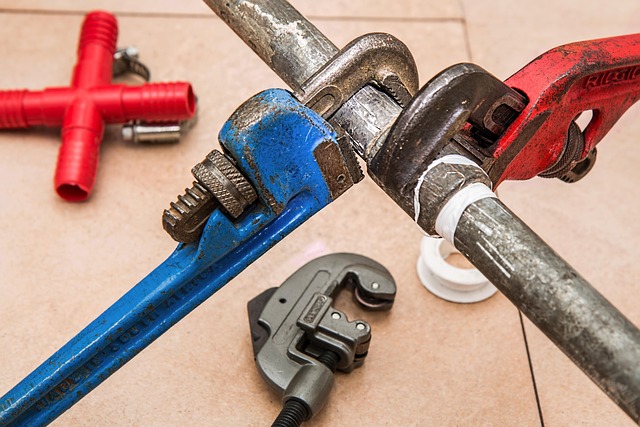Concrete foundation damage is a common issue driven by settlement, heave, or environmental factors. Early signs include cracks, uneven floors, and structural instability. Regular inspections enable timely concrete repair, preventing costly future damage. Non-Destructive Testing (NDT) methods like GPR and ultrasound help identify issues accurately. Advanced repair techniques, such as crack filling with epoxies and innovative lifting methods, offer effective solutions. Choosing the right materials is crucial for long-term stability. Homeowners can opt for quick fixes or comprehensive repairs, each addressing different needs and budgets. Proper surface preparation, material compatibility, and support are essential to avoid mistakes that compromise repairs. Case studies demonstrate successful concrete repair projects revitalizing historic buildings and infrastructure.
Structural Foundation repair is a critical aspect of maintaining the integrity and longevity of any building. This article explores the intricate world of concrete repair, providing insights into various aspects that impact its effectiveness. From identifying early signs of damage to understanding advanced repair techniques, we delve into non-destructive testing methods and the importance of choosing the right materials. Additionally, we compare cost-effective solutions with comprehensive repairs, highlight common mistakes to avoid, and share inspiring case studies, empowering readers to navigate concrete repair projects with confidence.
Understanding Concrete Foundation Damage: Common Causes and Early Signs

Concrete foundation damage is a common concern for many homeowners, often requiring professional concrete repair services. Understanding the causes and early signs is crucial for prompt action to prevent further deterioration. One of the primary reasons is settlement, which occurs when the soil beneath the foundation compacts or shifts unevenly due to factors like water saturation or changes in temperature. This can result in cracks, uneven floors, and even door or window misalignment.
Another frequent issue is heave, caused by excessive moisture in the soil expanding against the concrete. This leads to lifting and warping of foundation walls, creating large cracks and structural instability. Early signs include small cracks on walls, ceiling stains, and doors or windows that stick or fail to close properly. Regular inspection can help identify these issues early, allowing for timely concrete repair to prevent costly and extensive damage in the future.
The Importance of Prompt Concrete Repair for Structural Integrity

Concrete repair is a crucial aspect of maintaining structural integrity, especially in older buildings and infrastructure. Delving into the world of concrete repair reveals a critical process that safeguards the longevity and stability of structures. When concrete begins to crack or deteriorate, it’s not just an aesthetic issue; it can compromise the overall strength and support of walls, foundations, and other architectural elements. Prompt attention to these issues is paramount.
Neglecting concrete repair can lead to further damage, creating a cascading effect that intensifies structural weaknesses. Moisture intrusion, for instance, can accelerate corrosion of steel reinforcement bars, causing additional cracks and potential collapses. Therefore, addressing concrete repairs swiftly enables buildings to withstand environmental stresses, including heavy rainfall, extreme temperatures, and seismic activities, ensuring safety and stability for years to come.
Non-Destructive Testing Methods for Evaluating Foundation Health

Evaluating the health of a foundation without causing damage is crucial in the realm of structural repair, especially for concrete structures. Non-Destructive Testing (NDT) methods play a pivotal role in this process, providing valuable insights into potential issues and guiding the decision-making for concrete repair techniques. One commonly employed NDT technique involves using ground penetration radar (GPR), which can identify internal structures, cracks, or voids within concrete foundations without leaving any visible marks. This method is particularly useful for assessing the integrity of slabs on grade, foundations, and walls.
Another powerful tool is ultrasound, which uses sound waves to detect and measure defects in concrete. By transmitting high-frequency sound pulses into the structure, technicians can locate and assess cracks, helping to determine the extent of damage and plan effective concrete repair strategies. These non-destructive approaches allow professionals to make informed choices regarding repairs, ensuring that any interventions are tailored to the specific needs of the foundation while minimizing disruption and cost.
Advanced Techniques in Concrete Repair: From Crack Filling to Structural Lifting

In the realm of structural foundation repair, advanced techniques have emerged to address complex concrete repair challenges. One such innovative approach is crack filling, which involves injecting a specialized epoxy or polymer into fine cracks to prevent their propagation and strengthen the overall structure. This method not only enhances aesthetics but also plays a pivotal role in maintaining the integrity of buildings.
Furthermore, structural lifting techniques have revolutionized the industry. By utilizing advanced equipment and methods, professionals can raise and stabilize sinking or leaning structures. This involves precision jacking, underpinning, and the installation of steel beams or carbon fiber bars to transfer load and ensure the long-term stability of concrete structures. These cutting-edge repair strategies offer effective solutions for even the most intricate concrete repair needs.
Choosing the Right Materials for Long-Lasting Foundation Restoration

When undertaking structural foundation repair, selecting the appropriate materials is paramount for ensuring longevity and stability. Concrete repair, in particular, requires materials that can withstand the rigours of underground conditions while fostering robust bonding with existing concrete. High-quality, durable epoxy injections are a popular choice due to their ability to fill cracks and fractures, enhancing the overall structural integrity.
The selection should also consider environmental factors, such as moisture levels and potential chemical reactions. Using materials that offer resistance to corrosion and degradation ensures the repair job stands the test of time. Furthermore, choosing products with excellent bond strength facilitates a seamless integration with the existing foundation, promoting sustained structural stability.
Cost-Effective Solutions vs. Comprehensive Repairs: When to Opt for Each

When dealing with structural foundation issues, homeowners often face a choice between cost-effective solutions and comprehensive repairs. The former may provide quick fixes, but they are usually temporary and can lead to more significant problems down the line. Concrete repair techniques like epoxy injection or carbon fiber wrapping are excellent for reinforcing small cracks and preventing further damage, making them a budget-friendly option. These methods are ideal for minor foundation issues and can extend the life of your structure without excessive expenditure.
On the other hand, comprehensive repairs involve addressing the root cause of the problem, which often requires more extensive work. This might include underpinning, where additional support is added to raise and stabilize the foundation. While it may seem pricier upfront, this approach ensures long-term stability and protection against future damage. Comprehensive repair strategies are beneficial for larger or structurally critical issues, ensuring the integrity of your home’s foundation for years to come, thus saving you from costly renovations in the future.
Common Mistakes to Avoid During Concrete Foundation Repair Projects

When undertaking concrete foundation repair projects, several common mistakes can arise that may compromise the effectiveness of the repairs and even lead to further damage. One of the most frequent errors is neglecting proper preparation of the existing concrete surface. Concrete repair isn’t just about applying a new layer; it involves thoroughly cleaning, etching, and moistening the surface to ensure better adhesion. Skipping this crucial step can result in a weak bond between the repair material and the original concrete.
Another mistake to avoid is using incompatible materials or techniques. Different types of concrete require specific repair methods. Mixing up epoxy injections with hydraulic cement, for instance, can lead to chemical reactions that weaken the overall structure. Always match the repair material to the concrete type and consider seeking professional advice if you’re unsure about the best course of action. Additionally, inadequate support during repairs is a common pitfall; ensuring proper bracing and support prevents shifting and damage to nearby structures or services buried beneath.
Case Studies: Successful Concrete Repair Projects and Their Impact

Concrete repair projects, when executed successfully, can transform structures and extend their lifespans. Case studies illustrate several notable examples. In one instance, a historic building in a bustling metropolis suffered extensive concrete damage due to underground water seepage. Through meticulous evaluation and innovative repair techniques, including advanced epoxy injections and steel reinforcement, the structure was stabilized. This project not only preserved the architectural integrity but also ensured the building’s safety for future generations.
Another successful case involves a bridge deck that had developed significant cracks and spalls over time. Using modern polymeric concrete repair materials, experts filled the voids and repaired the surface. The result was an enhanced structural capacity, improved aesthetic appeal, and extended lifespan of the bridge. These real-world examples highlight how effective concrete repair strategies can revitalize aging infrastructure, ensuring its longevity and safety in today’s world.
